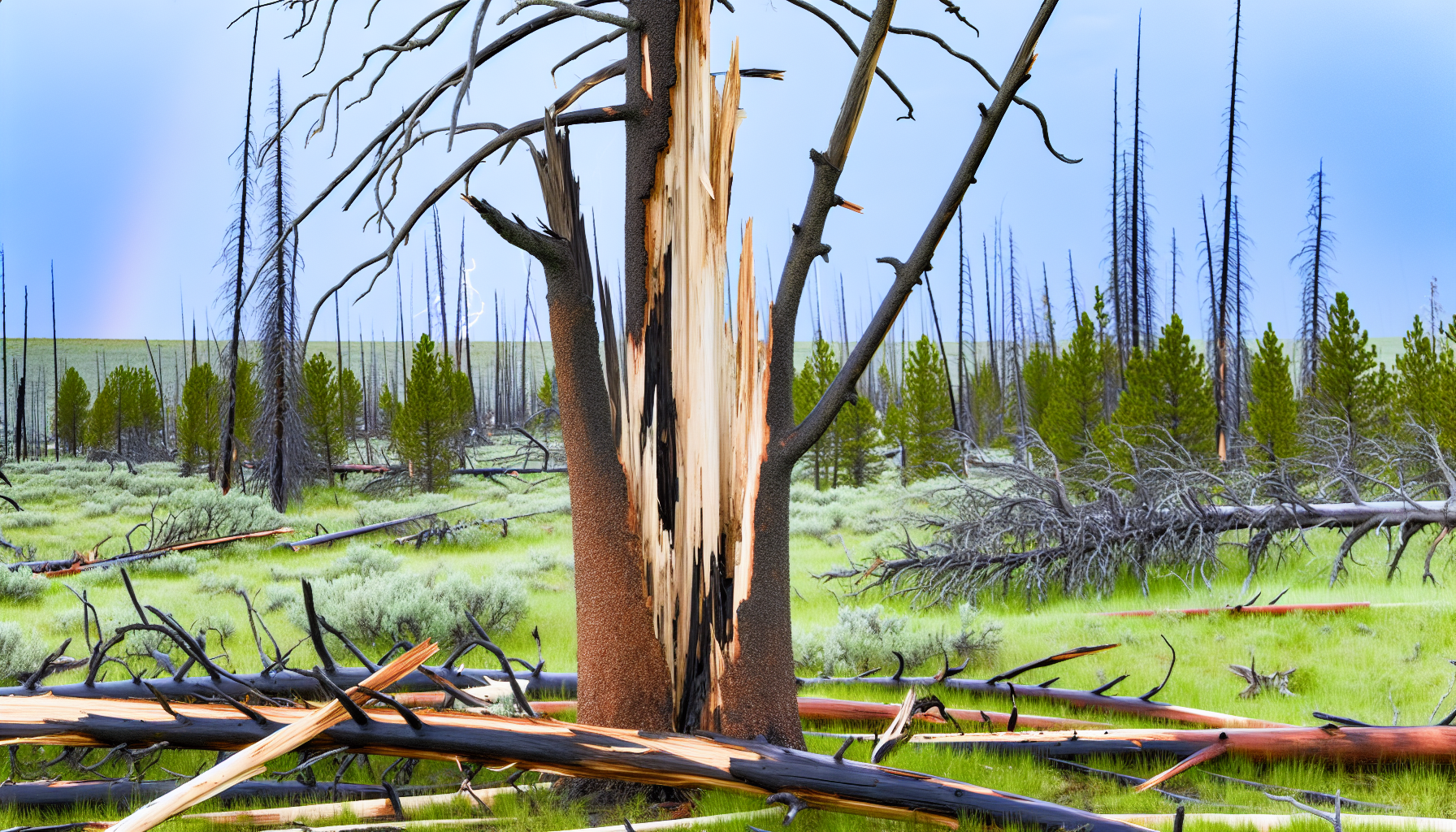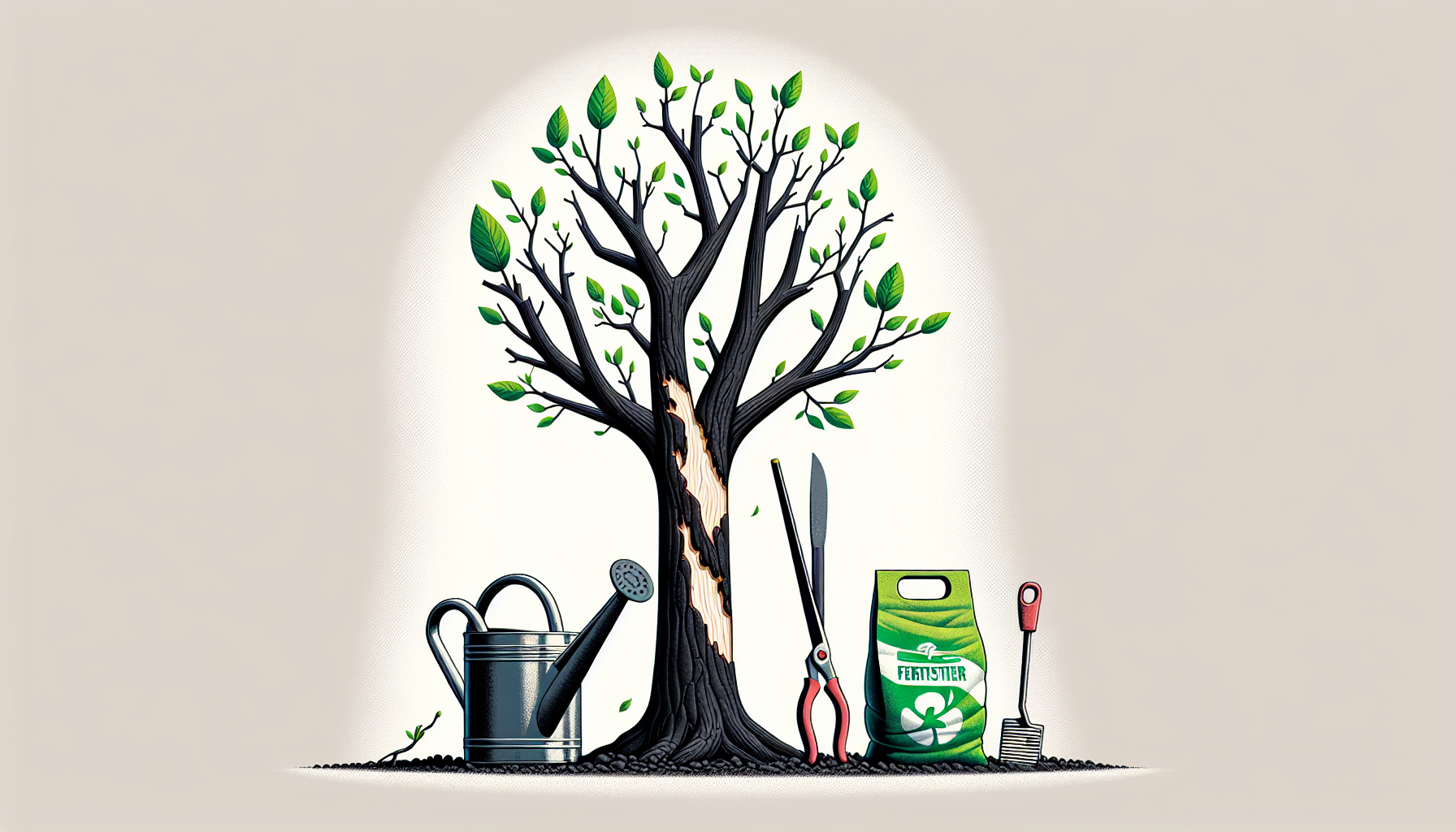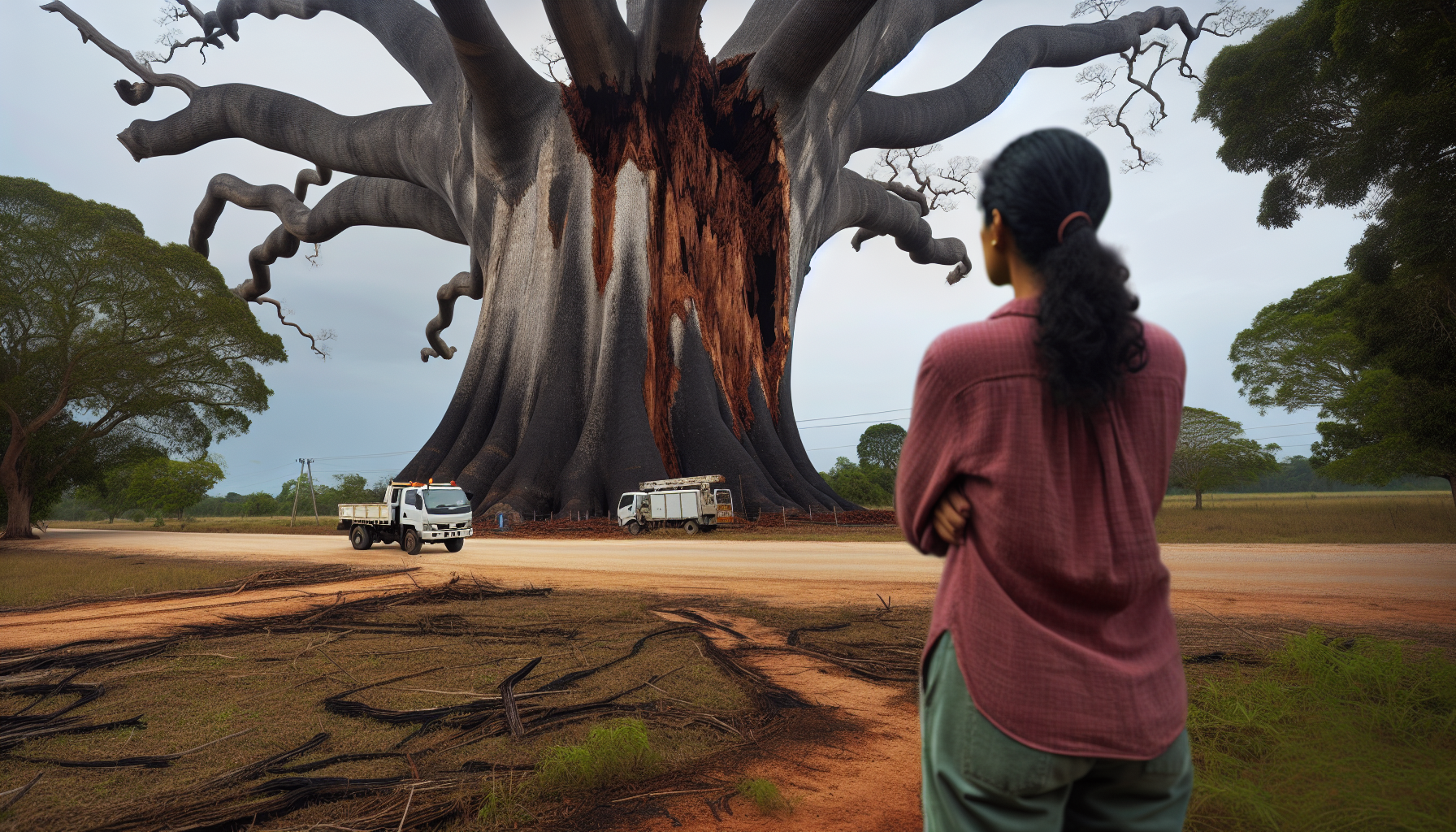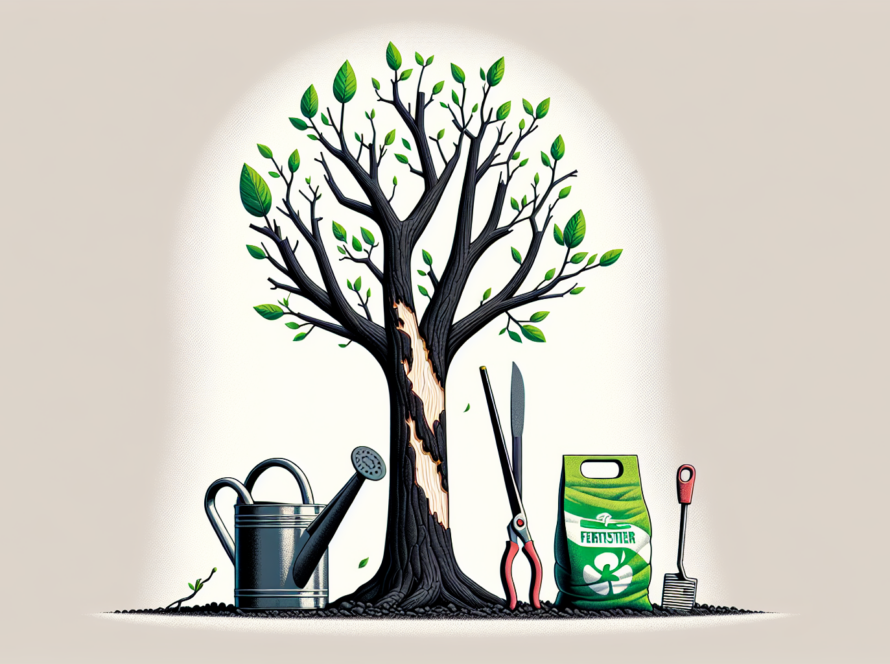If you’re asking how to tell if a tree was struck by lightning, spotting stripped bark or blackened wood can be your first clue.
This article will concisely lead you through these initial signs and more, explaining how to safely assess and manage a tree’s condition post-lightning strike, offering expert insights without going too deep too quickly.
Key Takeaways
Trees struck by lightning bear visible indicators such as stripped bark, blackened areas, and splintered wood, but may also suffer from significant internal and root damage, affecting their health and potential for survival.
Post-lightning strike remediation includes safety measures, health assessments by professionals, and recovery techniques such as watering, fertilization, and pruning to assist the affected tree.
Installing a lightning protection system, composed of a rod, conductive copper cable, and grounding, can mitigate the risk of damage from future lightning strikes, but requires regular inspection by qualified personnel.
Unmasking the Signs of a Lightning Strike

A bolt of lightning is a formidable force, and when it strikes a tree, it leaves undeniable signs. Prompt recognition of these signs is important for damage assessment and the implementation of effective recovery measures.
A tree struck by lightning exhibits distinct visual clues, but the lightning damage often goes beyond what meets the eye, affecting other trees in the vicinity as well. Despite this, some tree survive such incidents and continue to grow.
Visual Clues: Bark and Wood Damage
At first glance, a lightning-struck tree may exhibit:
Bark stripped, where the bark is literally torn from the trunk
Blackened areas on the bark, a result of the extreme heat generated by the lightning strike causing charring
Splintered wood, visibly tearing wood fibers away from the tree, creating torn wood
These are all visible signs of a lightning strike on an entire tree, including hanging branches.
Examining the tree visually after a storm could reveal broken branches, offering an initial assessment of its condition.
Beyond the Bark: Internal Signs
While visual signs provide key clues, a thorough investigation of a lightning-struck tree requires delving beneath the bark. Lightning can travel along the wood grain, burning a channel down the trunk and potentially causing extensive internal damage. Such internal damage can affect the tree’s vascular system, impairing nutrient and water flow, and potentially leading to tree mortality.
The damage patterns can vary depending on the species due to differing tissue alignments.
The Aftermath of a Lightning Hit: Tree’s Health Assessment

After identifying signs of a lightning strike, one should evaluate the aftermath. A severe lightning strike can cause the tree’s canopy to die, signaled by sudden leaf loss or a pronounced change in foliage color. Following such an event, the tree’s recovery demands additional attention.
Generous amounts of water can compensate for moisture loss, and the use of fertilizer can encourage quicker recovery and new growth. Regular pruning of damaged branches can further aid the recovery process.
The Role of Species and Location in Lightning Strikes
While every tree is potentially at risk from lightning, certain factors can increase this likelihood. Conifers, for example, are more frequently damaged by lightning than other tree species. Large trees, particularly species such as tulip tree, oak, pine, and maple, are particularly susceptible to lightning strikes.
The tree’s location also plays a role, but surprisingly, elevation alone doesn’t significantly affect the likelihood of a lightning strike.
Safety Measures Post-Lightning Impact

Safety is paramount when dealing with lightning-struck trees. Residual electrical charge and potential hazards such as hidden power lines necessitate maintaining a safe distance from the affected tree. Should a tree catch fire following a lightning strike, one must promptly contact the fire department.
Professional tree services should be engaged swiftly for damage assessment if a lightning-struck tree poses a substantial tree safety risk.
When to Seek Professional Tree Inspection
Professional intervention is needed in the aftermath of a lightning strike. If a tree is struck by lightning, consulting a certified arborist for an evaluation of the tree’s condition becomes a priority. An arborist’s professional assessment will address safety concerns, determine the tree’s viability, and identify whether the tree can recover or should be removed.
Aside from the immediate aftermath, a tree care professional’s long-term care and monitoring are indispensable for tracking the tree’s recovery progress, making the involvement of a tree care professional crucial.
Implementing Lightning Protection Systems
A proactive approach to lightning strikes involves having a lightning protection system installed. Such a system provides a controlled path for lightning, thereby reducing the risk of future strikes and collateral damage. A proper system consists of a rod, a conductive copper cable running along the trunk, and a grounding system buried in a trench. To maintain the system’s functionality, regular inspections by a qualified arborist are necessary.
Recovering from Root Damage
A cautious, nurturing approach is needed to recover from root damage inflicted by a lightning strike. Visible cracks along the root pathway and signs of stress in the tree, such as yellowing leaves and thinning foliage, indicate root damage. If the tree survives until the next growing season, its chances of recovery are higher.
Recovery efforts should include minimizing soil compaction, maintaining soil moisture, and providing nutrient support.
Summary
Our journey through the lightning-struck landscape of trees has covered a lot of ground, from identifying the signs of a lightning strike to understanding the recovery process. The importance of professional tree care services in assessing damage, aiding in recovery, and implementing lightning protection systems has been emphasized. The responsibility rests on us to ensure the wellbeing of our arboreal friends, safeguarding them from the wrath of the storm and nursing them back to health if they fall victim to it.
Frequently Asked Questions
What does a tree look like after lightning hits it?
After a tree is struck by lightning, you’ll often see vertical black burn marks on its bark due to the high-voltage electricity flowing through the sap, instantly killing that part of the tree.
What color does a tree turn when struck by lightning?
When struck by lightning, a tree’s exposed wood can appear blackened or charred due to the intense heat. This occurs when the lightning removes sections of the bark.
Can a tree recover from a lightning strike?
Yes, a tree can recover from a lightning strike, but the extent of the damage will determine its chances of survival. If the tree survives until the next spring, it has a higher chance of recovery.
How does a lightning strike affect a tree’s health?
A lightning strike can cause significant internal damage to a tree, affecting its vascular system and potentially leading to tree mortality.
Which tree species are more likely to be struck by lightning?
Conifers, tulip trees, oak, pine, and maple are more likely to be struck by lightning. These species are particularly susceptible to lightning strikes.




